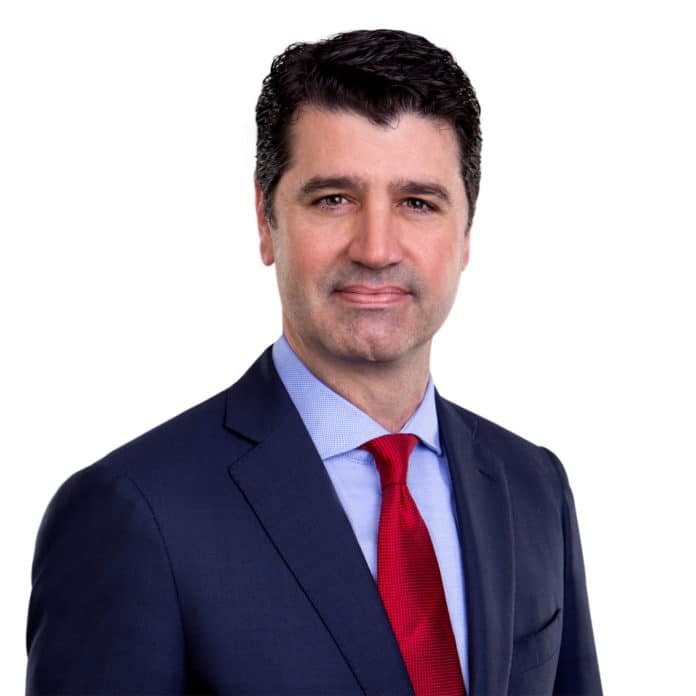Chris Young has built his career on water.
As an engineer, he has gained traction through protection of this precious resource and creating solutions to prevent water from devastating lives and property. He’s dealt with many challenges and has taken part in many solutions.
As a result of his experience, which includes the aftermath of Hurricane Katrina in New Orleans in 2005, Young was recently named president/CEO of Alan Plummer Associates Inc. (APAI). Young is the third president in the history of the company, which is celebrating its 40th anniversary this year.
Young, 46, was chosen for his 23 years of experience as well as a professional approach that aligns with Alan Plummer’s corporate culture and its vision of providing expert engineering with integrity and respect for employees and clients.
“I see Chris as someone who can provide the leadership that will advance the 40-year legacy of APAI that has been established by its owners and employees,” said founder Alan Plummer Jr., who began the firm in 1978 using the living room of his home as an office and setting up a drafting table in the bedroom.
Six years later, Alan Plummer transitioned from a study firm to a study and design firm with an emphasis on water and wastewater treatment.
Now a regional firm, Fort Worth-based Alan Plummer Associates employs more than 100 people in offices in Austin, Dallas, Corpus Christi and Oklahoma City.
For most of his career, Young has worked for a global engineering firm in Louisiana and Dallas that changed ownership during his tenure.
He led teams and groups working for state and local government clients on projects on wastewater collection, pumping, pipeline and treatment services. He also has experience in wastewater master planning and Sanitary Sewer Overflow Consent Decree implementation.
Besides Alan Plummer Associates’ corporate culture and its reputation for skillfulness and integrity, Young said the move to a smaller firm provides more “nimbleness” in getting projects approved and moving faster.
Consider the number of number of epic flooding events in the past few years in Texas alone.
“Houston faced a 700-year rainfall with Hurricane Harvey and a 500-year event with two large floods a few years ago,” Young said. That all occurred within a five-year period.
For some context, Young said imagine the traffic headaches if a Super Bowl game at AT&T Stadium were being held on a Monday morning during rush hour at the same time as a Justin Timberlake concert at the American Airlines Center in Dallas.
“The transportation system is not equipped to handle it,” Young said.
That scenario is akin to an epic rainfall event on the water and wastewater infrastructure of a region.
With those types of recent rainfall events – even the Dallas-Fort Worth area has experienced significant rainfall and flooding – the challenge for engineers is to make sure the infrastructure is able to handle it, Young said.
Likewise, in periods of prolonged drought, also common in this region, water recycling and conservation plans and infrastructure need to be in place to keeping faucets running.
“Water is a real serious challenge our clients face,” Young said.
Young earned his bachelor’s degree in civil engineering from Louisiana State University and his MBA from Southeastern Louisiana University. He is licensed in Texas, Louisiana and Mississippi.
Young is a resident of Dallas. He and his wife, Jennifer, have four children
His professional affiliations include serving on the Collection Systems Committee Inflow/Infiltration Technical Practice Group for the Water Environment Federation and as Scholarship Committee chair for the Water Environment Association of North Texas Chapter. He is also a member of the Dallas Regional Chamber and serves on its Infrastructure Policy Committee.
The Fort Worth Business Press recently caught up with Young to talk about his new role with Alan Plummer Associates, his career highlights and the water issues in North Texas:
What changes do you have in mind for your role at Alan Plummer Associates?
At Alan Plummer Associates, we will continue our technical excellence, integrity and focus on technology. In the future, one change I foresee is connecting our great engineers with clients more regularly to proactively grow client relationships and benefit our marketing processes.
Please tell us about some of the most significant projects you have been involved with in your career?
Two of the most significant projects in my career involved the creation of plans to mitigate Sanitary Sewer Overflows (SSO).
The first was a project early in my career with the City of Baton Rouge, Louisiana. I was a young engineer and had the opportunity to learn from some of the best engineering professionals in the world. Later in my career, I led a team for the San Antonio Water System to create an SSO plan, giving guidance to others as a senior engineer.
In both instances, the client was spending significant amounts of money to solve an environmental issue that was complex and system wide. The projects were impactful because I enjoyed working with a large, diverse team to accomplish big goals for our client.
Please describe some of the challenges we have in North Texas with water resources.
You may have heard the saying, “Where the people are, the water isn’t; and where the water is, the people are not.” Simply stated, North Texas has relatively small water supplies in respect to other regions of the state.
There has been incredible collaboration with our clients, the water providers in North Texas, to efficiently use and conserve water. This is the least expensive way to provide the “next drop” of water. Essentially, it’s cheaper, and quicker, to work together and determine ways to use our current supplies more efficiently than it is to build a reservoir and pipeline for water access.
Over the past 10 years, the North Texas population has grown at a remarkable rate. It’s worth noting that our North Texas water providers have collaborated to mitigate the water supply impact of this growth, and on a per capita basis, we are using less water due to conservation and reuse strategies.
Are there any technology changes on the horizon that will help better conserve and manage water resources? Please describe.
Using today’s technology from a data management standpoint will help us better collect, manipulate and analyze data. For example, automatic water metering can now benefit individual users and water providers.
Users, when given access, can monitor the impacts of their own water usage and notice trends to save money. For water utilities, data proves beneficial to identify leaks in the system and increase efficiency.
There are also ongoing advancements when it comes to treatment and implementation of water projects overall. These advancements include treatment processes and technologies in the way we construct projects through the use of better materials and equipment. Substantial research has led to a better understanding of existing technologies, such as reverse osmosis, and use of advancements to benefit providers and users alike.








